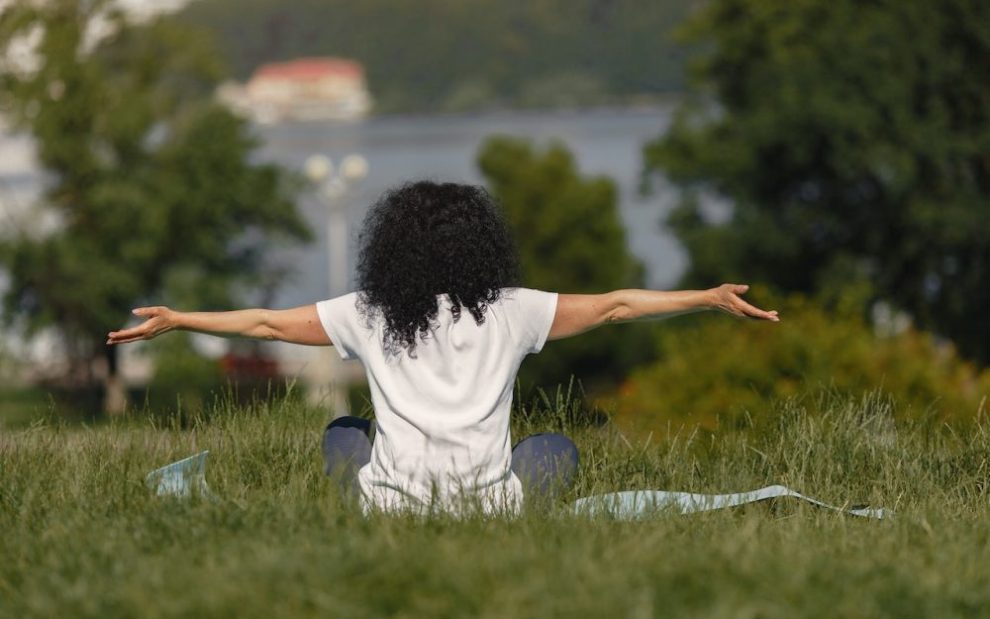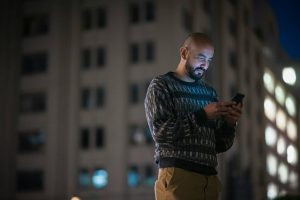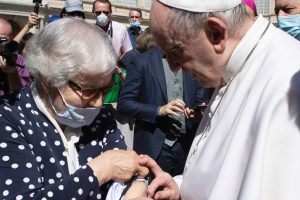When I was 13, I crashed while attempting a new tumbling pass at gymnastics practice. I spent the night in the hospital and woke up with a cast stretching from my shoulder to fingers. Rehabilitation was rigorous and painful. Progress was slow. I walked into the orthopedic clinic frustrated and feeling like a victim. The doctor decided to tell me what he previously thought I was too young to know: In the emergency room, he almost had to amputate my arm. The injury cut off blood flow to my hand, and he struggled to revive it. In one moment, my angst become awe. I went from seeing what I didn’t have to appreciating what I did. I could have one arm. Against the odds, I have two. Embodied bitterness became embodied gratitude. The story of my elbow changed, and that changed my life. I live knowing that my left arm is a gift.
My body has a story, and it’s part of God’s story. A piece of my vocation is to continually drop in and inhabit my body. I want to live in and from my body, continually revising its story and allowing my becoming to expand and unfold.
When I read the Bible, I see bodies everywhere. I see God taking time and care to create our bodies, knitting us together in our mothers’ wombs and knowing the hairs on our heads. I see the beauty of bodies celebrated in the love poetry of Song of Songs. I see God taking on a body in Christ so that not even our bodies can separate us from the love of God. I see Jesus building a ministry around restoring marginalized bodies to the center of things. I see an intimate and sensual moment when Mary nurtures Jesus’ body by massaging his feet with perfume and tears. I see Jesus tending to paralyzed bodies, bleeding bodies, and leprous bodies with compassion and attentiveness. I see his body becoming more porous throughout his life. He uses spit infused with power to heal. Power seeps from his cloak to heal. Ultimately, divinity flows from him on the cross to heal. I see Jesus inviting us back home to our bodies so he can heal us too.
Our Creator calls us very good, and our Messiah embraces the full human experience, modeling beloved belonging. Yet, our church often distrusts bodies. Part of this is old remaining residue. The church formed in a context steeped in the teachings of Plato and the Stoics, who were skeptical of bodies. Plato believed our bodies were dirty. The Stoics, who valued lack of passion as the highest virtue, advocated for the mind to control the body. The highest positions held in that culture were by elite men—politicians and philosophers—who lived in the mind and were tasked with thinking. Meanwhile, women, who bled and breastfed, and laborers, who worked with their bodies, were seen as inferior.
Our church fathers were similarly wary of their bodies, conditioned to override their emotions. They wrote about the sins of the body, placing a high value on self-control. Today, in our faith communities, spiritual value is still placed on suppressing and repressing signals from our bodies to exist in our minds.
Yet, mind-body dualism is simply not working. We are learning more and more that the trauma that lives in our bodies is real and that healing must happen in our bodies. We can’t think our way out of a feeling problem. Our bodies are wise, and they talk to us. I believe it is spiritual work to dissolve mind-body dualism and practice embodied spirituality individually and communally. Claiming our bodies and sharing our body stories with each other can create communities where all bodies feel safe and feel like they belong.
There are real barriers to dropping into your body to do the work of healing toward wholeness. We practice our faith in a disembodied church in the larger context of a disembodied society. Yet, there are simple things you can do today to begin your journey toward the healing and wholeness that comes from embodied spirituality. Three pathways back home to our bodies include breath, movement, and reflective writing.
Once a day, take three slow, conscious breaths. Feel your body expanding on your inhale and releasing on your exhale. Bring your attention to the sound, rhythm, and texture of your breath. Our breath can deepen the connection between our minds and bodies. It can deepen our connection between our inner lives and the world around us. Allow your breath to be a prayer that invites you back home to your body and to the present moment. Feel the Spirit moving in and through you.
Once a day, move your body with great attentiveness. Roll your shoulders and neck slowly. Choose a staircase to walk up slowly and be grateful while you climb. Lay with your legs up against the wall for a few minutes and allow the floor and wall to hold you up. Stand up tall and acknowledge the strength and symmetry of your skeleton. Remember you have a body. Choose a prayer posture that may feel unfamiliar and notice how it shifts your energy. As a spiritual practice, I go outside every day, spread out my toes, and look up all the way at the sky. I remember how vast and beautiful the universe is. My face and shoulders soften. It shifts something in my body and spirit, inviting me to stay awake to my life and the world around me.
Set aside some time to do reflective writing about your body. What messages have you received from others about your body? How do you talk to your body? How do you treat your body? What barriers keep you from experiencing your body as home? What is the coolest thing your body can do? What do you enjoy doing while your body is moving or still? Choose a body part and write some memories you have around that body part over the years. Take some time to thank your body and appreciate it. What is your body’s story?
These simple practices are a starting point. The more moments we can show up embodied, the more hope we have of living in healing and wholeness in our communities.
In my early 30s, I had two miscarriages in a row. It was a season of deep loss and sadness. I wanted to be a mother so badly, and I was so scared that would not be part of my body story. I focused on what I didn’t have instead of what I did. I wondered, Is my body enough?
Eventually, I gave birth to a son, who came into the world with the most luminous face I have ever seen. Then another son followed, luscious and loving. I held my two boys in my two arms with embodied gratitude. There could have been nothing, but there is something. And that something is very good.
One morning, my baby discovered his hands, staring at them with curiosity and reverence. “Isn’t it lovely?” I cooed. “You have two hands. One. Two. So do I. One. Two. You are going to do such beautiful things with those beautiful hands.” I cried a little as I told him this. I believed it for him. I believe it for me, and I believe it for us.
Image: Pexels/Gustavo Fring













Add comment